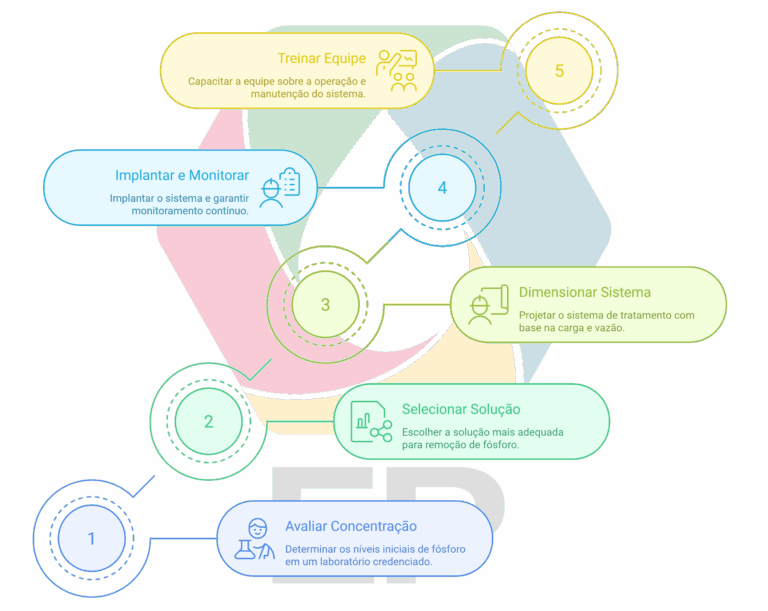Phosphorus is a fundamental nutrient for the maintenance of life, but in high concentrations it represents a considerable environmental challenge. In the context of domestic and industrial sewage, its high concentration can trigger the eutrophication of water bodies, compromising ecosystems and the quality of the water supply.
Compliance with the limits established by resolutions and regulatory bodies is not merely a legal obligation, but a commitment to sustainability and corporate reputation in relation to ESG policies.
Why is phosphorus a problem in sewage?
– EutrophicationEutrophication, a process driven by an excess of nutrients such as nitrogen and phosphorus in bodies of water, leads to the proliferation of algae and other aquatic plants. The excessive presence of algae can compromise the quality of water for human consumption and recreation. In addition, the decomposition of this organic matter consumes large quantities of dissolved oxygen, creating anoxic zones, which can lead to the mortality of fish and other aquatic organisms.
– Fines and penaltiesNon-compliance with environmental legislation results in severe fines and sanctions that go beyond financial penalties. The consequences can include the banning of activities, the revocation of licenses and even criminal proceedings. Such sanctions not only generate high costs, but can also disrupt operations, resulting in significant financial losses and irreparable damage to the company’s reputation. In this way, environmental compliance is not just a legal obligation, but a strategic investment in business sustainability and resilience.
– Social and reputational impactSocial and reputational impact is an increasingly important factor for companies. Incidents of pollution or unsustainable practices can quickly turn into image crises, which can lead to a loss of trust and a deterioration in reputation, lower sales and difficulties in obtaining licenses and permits.
On the other hand, companies with a strong commitment to environmental responsibility can reap the rewards of a positive image, strengthening relationships with communities, attracting conscious consumers and building a more valuable and resilient brand in the long term.

Phosphorus removal technologies
Solutions can vary depending on the pollution load, the size of the plant and the type of effluent, usually ranging from Chemical Precipitation, Biological Processes or Advanced Polishing Technologies.
The choice of the best solution or combination of solutions must be preceded by a detailed study of the characteristics of the sewage, the quality targets for the final effluent and the technical and economic feasibility of each alternative.

How to apply it in practice

Common mistakes to avoid
❌ Select technology based solely on initial cost.
Do not plan the treatment or disposal of sludge with a high phosphorus content.
Failure to integrate automation and performance indicators.
Strategic benefits
Controlling phosphorus in sewage is essential for ensuring legal compliance, protecting the environment and enhancing corporate reputation.
EP offers customized solutions, from diagnosis to implementation and monitoring, guaranteeing clients efficiency, sustainability and safety.
